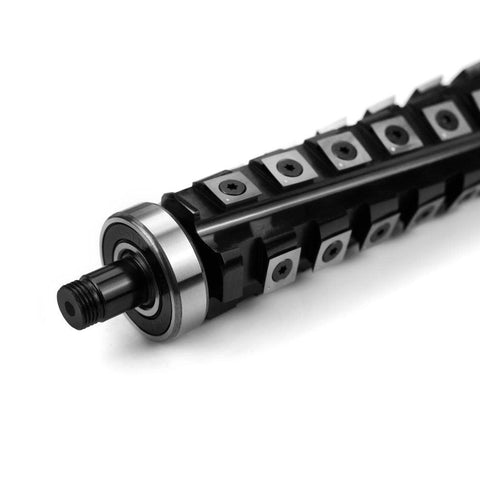Spiral vs Helical Head Planer Unraveling the Distinctions
Differences Between Spiral And Helical Head Planer
Woodworking enthusiasts and professionals often encounter the terms "spiral head" and "helical head" when discussing planers. These terms refer to different types of cutterheads used in planing machines. While both spiral and helical head planers serve the same purpose of smoothing and dimensioning wood, they have distinct characteristics that set them apart. In this article, we will delve into the world of spiral and helical head planers, exploring their differences, advantages, and considerations for woodworking projects.
Spiral head planers, also known as four-sided insert cutterheads, feature a cylindrical drum with multiple small cutter inserts arranged in a spiral pattern. These inserts are strategically positioned at varying angles along the drum, creating a spiral cutting pattern. As the wood passes through the planer, the spiral arrangement of the inserts ensures a continuous shaving action from multiple cutting edges.
On the other hand, helical head planers utilize a cylindrical drum with numerous individual cutter inserts arranged in a helical pattern. Unlike spiral head planers, the inserts on a helical head planer are not positioned at angles but rather in a helix or spiral formation along the drum. This configuration creates a staggered cutting pattern as the wood is fed through the planer.
One of the primary distinctions between spiral and helical head planers lies in the cutting action they produce. Spiral head planers generate a shearing cut due to the angled arrangement of the cutter inserts. This shearing action results in reduced tear-out and a smoother finish on the wood surface. Conversely, helical head planers provide a slicing action due to the staggered arrangement of the cutter inserts. This slicing action is also effective in minimizing tear-out and producing a clean surface.
Another significant difference between the two types of planers is the number of cutting edges engaged with the wood at any given time. Spiral head planers typically have more cutting edges engaged simultaneously, as the spiral arrangement allows for a continuous shaving action. This increased contact with the wood results in a higher material removal rate and reduced strain on each individual cutter insert.
In contrast, helical head planers engage fewer cutting edges at a time due to the staggered arrangement of the inserts. The helical pattern ensures that only a portion of the cutting edges is in contact with the wood during each pass. This reduces the overall cutting load on the planer, resulting in smoother operation and potentially longer tool life.
When it comes to tooling maintenance and replacement, spiral and helical head planers also differ. In spiral head planers, if an individual cutter insert becomes damaged or dull, it can be easily rotated or replaced without affecting the entire cutterhead. This flexibility allows for quick and cost-effective maintenance. Helical head planers, on the other hand, require the replacement of an entire cutting insert strip or segment if any of the inserts become damaged or worn. This may entail a higher cost and more involved maintenance procedures.
The choice between a spiral and helical head planer depends on the specific needs of the woodworking project. Spiral head planers are often favored for applications that require a high material removal rate, such as dimensioning rough lumber. The shearing action of the spiral cutterhead helps to achieve smooth surfaces and reduce tear-out. Helical head planers, on the other hand, excel in applications that demand a superior finish and reduced noise levels. The slicing action of the helical cutterhead, combined with the staggered arrangement of the inserts, contributes to minimized tear-out and a quieter operation.
In conclusion, the difference between spiral and helical head planers lies in the arrangement of the cutter inserts and the resulting cutting action. Spiral heads offer a continuous shearing cut, while helical heads provide a staggered slicing action. Each type has its advantages and considerations, making them suitable for different woodworking applications. By understanding the distinctions between spiral and helical head planers, woodworkers can make informed decisions and select the most appropriate tool for their specific projects.

